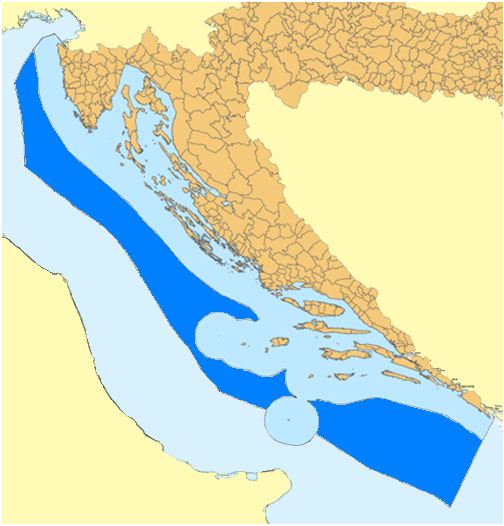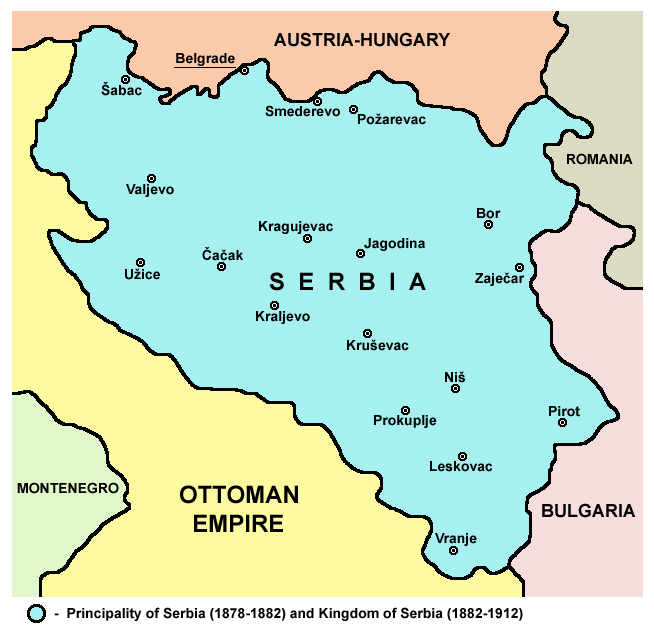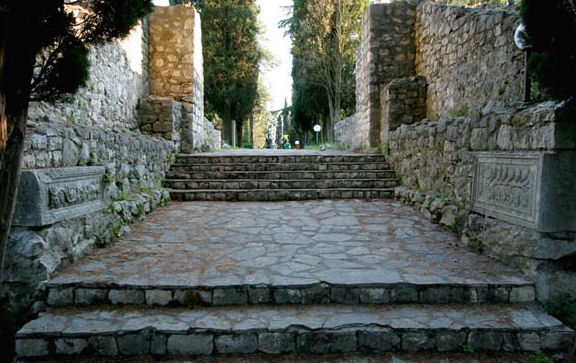|
Spačva Basin
The Spačva basin ( sh-Latn-Cyrl, Spačvanski bazen, Спачвански базен) is a geographic microregion in eastern Croatia and northwest Serbia. The region is located in the southwestern part of Syrmia—the latter being divided by Croatia and Serbia—and the southeastern part of Slavonia macroregion of Croatia, surrounding the Spačva River and the Studva River. The entire region measures 51,000 hectares, out of which 40,000 hectares is located in Croatia and 11,000 in Serbia. The region's 40,000 hectares of oak (Quercus robur) forests makes the Spačva basin one of the largest continuous lowland oak forests in Europe. Up until the 1935 regulation of the bank of the Sava River the entire region was regularly flooded in spring. In addition, the region forms an organic continuum with the Bosut Forest (''Bosutska šuma'', sr-Cyrl, Босутска шума) in Vojvodina in Serbia. The Bosut Forest is one of two strict nature reserves in Vojvodina. The Spač ... [...More Info...] [...Related Items...] OR: [Wikipedia] [Google] [Baidu] |
List Of Sovereign States
The following is a list providing an overview of sovereign states around the world with information on their status and recognition of their sovereignty. The 205 listed states can be divided into three categories based on membership within the United Nations System: 193 member states of the United Nations, UN member states, two United Nations General Assembly observers#Current non-member observers, UN General Assembly non-member observer states, and ten other states. The ''sovereignty dispute'' column indicates states having undisputed sovereignty (188 states, of which there are 187 UN member states and one UN General Assembly non-member observer state), states having disputed sovereignty (15 states, of which there are six UN member states, one UN General Assembly non-member observer state, and eight de facto states), and states having a political status of the Cook Islands and Niue, special political status (two states, both in associated state, free association with New ... [...More Info...] [...Related Items...] OR: [Wikipedia] [Google] [Baidu] |
Quercus Robur
''Quercus robur'', the pedunculate oak, is a species of flowering plant in the beech and oak family, Fagaceae. It is a large tree, native plant, native to most of Europe and western Asia, and is widely cultivated in other temperate regions. It grows on soils of near neutral Soil pH, acidity in the lowlands and is notable for its value to natural ecosystems, supporting a very wide diversity of herbivorous insects and other pests, predators and pathogens. Description Pedunculate oak is a deciduous tree up to tall, with a single stout trunk that can be as much as in girth (circumference at breast height) or even 14 m in Pollarding, pollarded specimens. Older trees tend to be pollarded, with boles (the main trunk) about 3 m long. They often live longer and become more stout than unpollarded trees. The crown is spreading and unevenly domed, and trees often have massive lower branches. The bark is greyish-brown and closely grooved, with vertical plates. There are often large burrs ... [...More Info...] [...Related Items...] OR: [Wikipedia] [Google] [Baidu] |
Bobota Canal
The Bobota Canal (, sr-cyr, Боботски канал, ) is a 50.73 kilometers long canal in Croatia. It is named after the eponymous village of Bobota, Croatia, Bobota. The canal is classified as a water management system of paramount importance for irrigation and flood protection for settlements in the surrounding area. It is a channel of the first category in Croatia. History Construction of the Bobota Canal started in the early 19th century with the aim of prevention of epidemics among people in villages in the swamp and their animals. Up to that point entire region was covered under Palača Swampland. Works without proper construction permits were initiated by nobleman Ivan Kapistran Adamović. Construction of Bobota Canal in Austria-Hungary period was the first major water management project of its kind and sale in modern-day Croatia in post-Roman Empire period. In the end, the canal constructed in the early 19th century was not efficient due to its insufficient width a ... [...More Info...] [...Related Items...] OR: [Wikipedia] [Google] [Baidu] |
Kopački Rit
Kopački Rit is a nature park in eastern Croatia in the municipalities of Bilje and Kneževi Vinogradi. It is located northwest of the confluence of the Drava and the Danube, situated at the border with Serbia. It comprises many backwaters and ponds along the Danube. It is one of the most important, largest and most attractive preserved intact wetlands in Europe. Fauna & Flora A part of Kopački Rit has been designated as a zoological reserve. Around 260 various bird species breed here including geese and ducks, great white egret, white stork, black stork, white-tailed eagle, crows, Eurasian coot, gulls, terns, common kingfisher and European green woodpecker. Many other species use this area as a temporary shelter on migration from the northern, cooler regions to the southern, warmer areas and vice versa. There are around 40 fish species including pike, ide, tench, bream, carp, catfish, pike-perch and perch. Mammals in the area include red deer, roe deer, wild boar ... [...More Info...] [...Related Items...] OR: [Wikipedia] [Google] [Baidu] |
Geography Of Croatia
The geography of Croatia is defined by its location at the crossroads of Central Europe and Southeast Europe, and the wider region of Southern Europe. Croatia's territory covers , making it the 127th largest country in the world. Bordered by Slovenia in the northwest, Hungary in the northeast, Bosnia and Herzegovina and Serbia in the east, Montenegro in the southeast and the Adriatic Sea in the south, it lies mostly between latitudes 42nd parallel north, 42° and 47th parallel north, 47° N and longitudes 13th meridian east, 13° and 20th meridian east, 20° E. Croatia's territorial waters encompass in a wide zone, and its internal waters located within the Baseline (sea), baseline cover an additional . The Pannonian Plain and the Dinaric Alps, along with the Adriatic Basin, represent major Geomorphology, geomorphological parts of Croatia. Lowlands make up the bulk of Croatia, with elevations of less than above sea level recorded in 53.42% of the country. Most of the lowland ... [...More Info...] [...Related Items...] OR: [Wikipedia] [Google] [Baidu] |
Slavonian Military Frontier
The Slavonian Military Frontier ( or ; ; ; ) was a district of the Military Frontier, a territory in the Habsburg monarchy, first during the period of the Austrian Empire and then during the Austro-Hungarian Monarchy. It was formed out of territories the Habsburgs conquered from the Ottoman Empire and included southern parts of Slavonia and Syrmia; today the area it covered is mostly in eastern Croatia, with its easternmost parts in northern Serbia (mostly in Vojvodina region.) Divisions The Slavonian Military Frontier was divided between three regiments: Regiment N°VII, based at Vinkovci; Regiment N°VIII, based at Nova Gradiška and Regiment N°IX, based at Petrovaradin. Other important towns in the area included Sremski Karlovci, Stara Pazova, Zemun, and Sremska Mitrovica. History During the history, name Slavonian Military Frontier referred to different territories. It was first located in what is now Central Croatia and was known as the Varaždin generalat. It was ... [...More Info...] [...Related Items...] OR: [Wikipedia] [Google] [Baidu] |
Vukovar-Syrmia County
Vukovar-Srijem County (), Vukovar-Sirmium County or Vukovar-Syrmia County, named after the eponymous town of Vukovar and the region of Syrmia, is the easternmost Croatian Counties of Croatia, county. It includes the eastern parts of the region of Slavonia and the western parts of the region of Syrmia, as well as the lower Sava river basin, Posavina and Danube river basin Podunavlje. Due to the overlapping definitions of geographic regions, division on Slavonia and Syrmia approximately divides the county vertically into north-west and south-east half, while division on Posavina and Podunavlje divides it horizontally on north-east and south-west half. The county's seat is in Vukovar, a town on the Danube river while its biggest town and economic and transportation center is in Vinkovci, town with 33,328 inhabitants. Vinkovci served as a temporary ''de facto'' seat of the county during the Croatian War of Independence with some institutions still remaining in the town as of 2020. In ... [...More Info...] [...Related Items...] OR: [Wikipedia] [Google] [Baidu] |
Central Serbia
Central Serbia (), also referred to as Serbia proper (), is the region of Serbia lying outside the autonomous province of Vojvodina to the north and the disputed Kosovo region to the south. Central Serbia is a term of convenience, not an administrative divisions of Serbia, administrative division of Serbia as such, and does not have any form of separate administration. Broadly speaking, Central Serbia is the historical core of history of modern Serbia, modern Serbia, which emerged from the Serbian Revolution (1804–17) and subsequent wars against the Ottoman Empire. In the following century, Serbia gradually expanded south, acquiring South Serbia, Kosovo, Sandžak and Vardar Macedonia, and in 1918 – following the unification and annexation of Kingdom of Montenegro, Montenegro and unification of Austria-Hungary, Austro-Hungarian areas left of the Danube and Sava (Vojvodina) – it merged with other South Slavic territories into the Kingdom of Yugoslavia. The current borders of ... [...More Info...] [...Related Items...] OR: [Wikipedia] [Google] [Baidu] |
Bosnia And Herzegovina
Bosnia and Herzegovina, sometimes known as Bosnia-Herzegovina and informally as Bosnia, is a country in Southeast Europe. Situated on the Balkans, Balkan Peninsula, it borders Serbia to the east, Montenegro to the southeast, and Croatia to the north and southwest, with a coast on the Adriatic Sea in the south. Bosnia (region), Bosnia has a moderate continental climate with hot summers and cold, snowy winters. Its geography is largely mountainous, particularly in the central and eastern regions, which are dominated by the Dinaric Alps. Herzegovina, the smaller, southern region, has a Mediterranean climate and is mostly mountainous. Sarajevo is the capital and the largest city. The area has been inhabited since at least the Upper Paleolithic, with permanent human settlement traced to the Neolithic cultures of Butmir culture, Butmir, Kakanj culture, Kakanj, and Vučedol culture, Vučedol. After the arrival of the first Proto-Indo-Europeans, Indo-Europeans, the area was populated ... [...More Info...] [...Related Items...] OR: [Wikipedia] [Google] [Baidu] |
Radio Television Of Vojvodina
Radio Television of Vojvodina, sr-Lat, Radio-televizija Vojvodine, , , , Rusyn: Радіо Телебачення Воєводини; abbr. РТВ/RTV (RTV) is the regional public broadcaster in the Serbian province of Vojvodina, headquartered in Novi Sad. Alongside statewide Radio Television of Serbia, RTV serves as the second major public broadcaster in the country. The radio service began in 1949, and the television service launched in 1975. RTV broadcasts in multiple languages, including Serbian, Hungarian, Slovak, Romanian, and Rusyn, later adding Romani and Ukrainian. RTV was initially known as Radio Novi Sad, established by the Assembly of Vojvodina's Chief Executive Committee ( Government of Vojvodina). During the 1990s, RTV became part of the centralized Radio Television of Serbia (RTS) but maintained its multilingual programming. In 1999, NATO bombed the RTNS studios, leading to their relocation. The 2002 Broadcasting Act established RTV as a distinct public b ... [...More Info...] [...Related Items...] OR: [Wikipedia] [Google] [Baidu] |
Vojvodina
Vojvodina ( ; sr-Cyrl, Војводина, ), officially the Autonomous Province of Vojvodina, is an Autonomous administrative division, autonomous province that occupies the northernmost part of Serbia, located in Central Europe. It lies within the Pannonian Basin, bordered to the south by the national capital Belgrade and the Sava and Danube Rivers. The administrative centre, Novi Sad, is the second-largest city in Serbia. The historic regions of Banat, Bačka, Syrmia and northernmost part of Mačva overlap the province. Modern Vojvodina is multi-ethnic and multi-cultural, with some 26 ethnic groups and six official languages. Fewer than two million people, nearly 27% of Serbia's population, live in the province. Name ''Vojvodina'' is also the Serbian word for voivodeship, a type of duchy overseen by a voivode. The Voivodeship of Serbia and Banat of Temeschwar, Serbian Voivodeship, a precursor to modern Vojvodina, was an Austrian province from 1849 to 1860. Its official name ... [...More Info...] [...Related Items...] OR: [Wikipedia] [Google] [Baidu] |
Sava River
The Sava, is a river in Central and Southeast Europe, a right-bank and the longest tributary of the Danube. From its source in Slovenia it flows through Croatia and along its border with Bosnia and Herzegovina, and finally reaches Serbia, feeding into the Danube in its capital, Belgrade. The Sava is long, including the Sava Dolinka headwater rising in Zelenci, Slovenia. It is the largest tributary of the Danube by volume of water, and the second-largest after the Tisza in terms of catchment area () and length. It drains a significant portion of the Dinaric Alps region, through the major tributaries of Drina, Bosna, Kupa, Una, Vrbas, Lonja, Kolubara, Bosut and Krka. The Sava is one of the longest rivers in Europe and among the longest tributaries of another river. The population in the Sava River basin is estimated at 8,176,000, and is shared by three capital cities: Ljubljana, Zagreb and Belgrade. The Sava is about -navigable for larger vessels: from the confluence ... [...More Info...] [...Related Items...] OR: [Wikipedia] [Google] [Baidu] |






